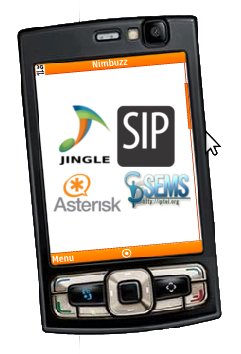When legacy proprietary companies start all of a sudden OpenSourcing their software, a lot of questions are raised. Of course they have their own explanations for the facts, although frequently are not the whole true about the fact.
Since Skype announced their OpenSource UI, I received some email asking why would that happen and what are the reasons behind the curtains.
Here is a personal explanation based on some facts:
Background Story:
- Skype started their business in a market almost empty of competition. VoIP indeed existed, but was NOT directed to end users, neither mass market.
- OpenSource would not make sense as it usually (for big companies) takes way more time and money to build solutions on top of standards then creating your own black box with the solutions of your own problems and challenges inside. And the lack of demand for a standard format was about 99%.
- Another reason is the "secret" factor, as the first ones, they have to create all the buzz around their holly grail and of course ensure the domination.
- That is why(among other reasons) Skype made their business on top of proprietary routing algorithms and proprietary protocols and encryption.
- In the other hand for very small VoIP services the picture is different as they started on top of OpenSource platforms, even in a time that most of them were experimental. The reason is, the target market was massively smaller than Skype targets. And of course the money to invest was way smaller as well.
- SIP adoption was adopted in almost 99% of the rising small providers that started popping up everywhere in the world.
- Interesting fact is that most pioneer small VoIP providers started with virtual PBX system, not even SIP routers and big platforms. Basically "grow on demand" strategy was adopted as well.
- VoIP is way more spread in the world since Skype started the massification. We have large number of companies building equipments, client soft-phones, VoIP platforms etc...
- We have a ridiculous huge number of VoIP providers which anther ridiculous range of different prices and quality.
- SIP is the main driver for major market. It is used on landlines in Europe and US, it is massively used in company PBX and telephony of big companies. Which are the main source of PAYED VoIP services.
- Skype is smaller in amount of users and revenue, if compared to all SIP Providers together.
- Google acquires Gizmo5 a medium VoIP provider fully operated over SIP. Yes it has direct relation.
- Skype ubiquity is restricted by their Desktop Client or their very limited IPhone client.
- Skype still growing the amount of Desktop users. But the amount of paying users is still and tends to get lower.
- Skype interoperability is null, as it is based on proprietary system and specifications.
- Competition makes more money and the migration from old Skype users to new VoIP alternatives is big. As educated users knows now how to change and why to change to cheaper and flexible services.
- We have more SIP enabled equipment and computers than Desktops with Skype client installed.
- OpenSource their SILK codec as already mentioned in this blog.
- Open SIP Gateway for Business Users. In order to start competing in a very profitable market slice.
- Bought the patent of their VoIP routing solutions. In order to prepare for an interoperability round.
- Aim for alternative and relatively "virgin" markets like mobile, Linux, netbooks etc:
- Release more usable mobile clients.
- OpenSource as much as possible for Linux as current client is really crap and also Linux users in general don't use closed source applications.
Skype wants its ubiquity and revenue back, and for that they are investing huge resources in Openness and Standardization, as it is what their market needs and demands nowadays.
In a mash-able hyper-connected world, who is closed and not interoperable will fade.


































